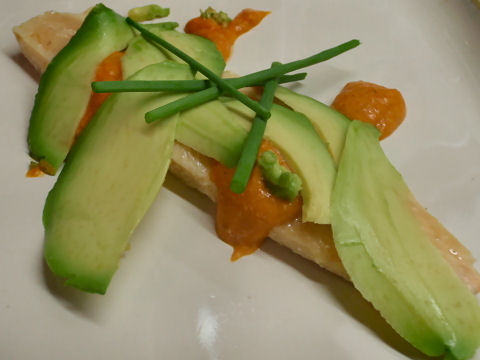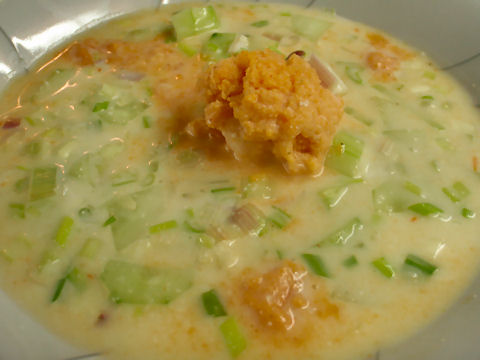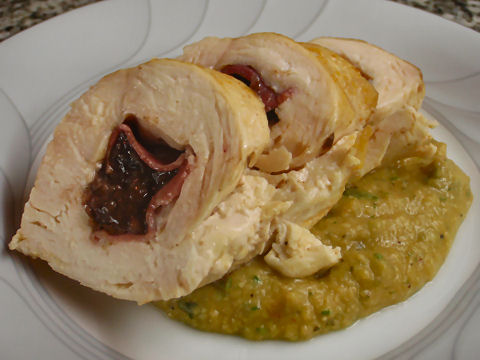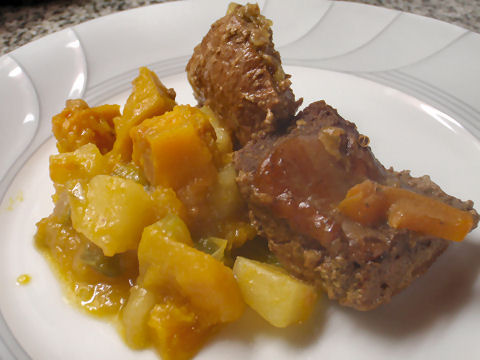“Comer bien o comer mal es una cuestión cultural. Comer o no comer es una cuestión de dinero.”
(Eating well or badly is a question of culture. Eating or not eating is a question of money.)
– Manual Vázquez Montalbán, author
Buenos Aires – On the western edge of Spain, bordering Portugal, is the region of Extremadura, not to be confused with the other side of the border, the eastern edge of Portugal, bordering Spain, the region of Estremadura. Though, the confusing is easy, since they share many cultural influences, including a mixing of the languages, art, business, and cuisine. I’m not sure what it was that had me pick the region as our theme for this last weekend – I’m sure there was something, but I didn’t make a note of it, and I can’t figure it out. Still, it’s a part of Spain’s culinary heritage that I have little experience with, so perhaps it just seemed a fun one to explore. Pork, lamb, chickpeas. Those seemed to be the gastronomic trio that pops up in a wide range of recipes from the region. Then again, trout, rabbit, frog, chickens – they all make their appearances.

Trout seemed like a good ingredient to start with. I decided I wanted to offer up a simple, warm, olive oil poached trout. In the course of perusing various options, I ran across a recipe for slow poached trout, and immediately adopted a portion of it. The trout itself, cleaned and deboned, then poached in olive oil for about 4-5 minutes, to just barely cook through, served with a couple of nice dollops of the lovely romesco sauce that I’d made for the previous night’s vegetarian dinner (romesco is one of those sauces that gets better and better over the following days, so I’d made a big batch), and then simple shaved some slightly underripe avocados over the top. Really nice combination.

Gazpacho is not particular to Extremadura, but as we’re winding down the summer, I decided to sneak one last one in. A white gazpacho seemed in order – a cup and a half of sour cream, mixed into roughly two quarts of the whey from making the cheesecake that we ended the dinner with (vegetable or light chicken stock will work just fine, but if you use those, add a splash of lemon juice or wine vinegar to give a little acidity), and blended with a half dozen garlic cloves and a handful of almonds, then strained. To that I added a fair amount of diced cucumber and chopped green onion, chilled it all, and then adjusted the seasoning with salt and white pepper. In the meantime, I made a granité from a puree of three fresh tomatoes, one red chili pepper, ¼ cup of olive oil, a teaspoon of powdered bay leaf and a teaspoon of salt – all frozen in the ice cream maker, to just a sort of slush stage, and then regularly broken up with a fork while in the freezer to keep the texture.

The “emblematic” stew of the region is called
cocido extremeño. There are, as with most such classic dishes, as many different recipes as there are people cooking it, and I’m sure arguments over whose version is worthy to grace anyone’s table occur on a regular basis – see
here and
here just to see both the similarity and differences. I wasn’t looking to make a stew, and decided to simply take the ingredients and reinterpret them – the basics seemed to be morcilla sausage, some sort of bacon or cured ham, chicken, chickpeas, and a variety of herbs. I took chicken breasts and pounded them out flat, laid a slice of
jamón serrano along one edge, took the stuffing out of a couple of
morcillas a la vasca, a slightly firmer version of the morcilla sausage than is the Argentine style, and laid that in a strip on the ham. I rolled them up, tied them, lightly coated the outside with salt and hot paprika, seared them in a little olive oil, and then into the oven to cook through. Then sliced, and laid out on a hummus-like puree of cooked chickpeas, smoked turkish pepper, olive oil, lemon juice, mint, parsley, oregano, and thyme.

Anise is a common flavor in the region, and I had decided on lamb for the main course (strange to have all this meat following a vegetarian dinner, but this was actually planned first). Into a dutch oven – chopped onions, celery, carrots and leeks, cooked in a little olive oil until soft, then added a couple of star anise, and about a tablespoon each of coriander seed, black peppercorns, green peppercorns, a couple of bay leaves, a few cloves, and some dried red peppers. Cooked that a few more minutes to develop the aromas a bit, then added large cubes of lamb loin, a cup of port, and just enough water to come up halfway on the lamb. Covered the pot, brought it to a simmer, and let it go for about six hours, stirring it every now and again so that the lamb, as it cooked, was semi-submerged and all sides got flavored nicely. At the end, the lamb is fork tender. Served it up with a ragout of sauteed red onion, green bell pepper, chilies, squash, potatoes, and chestnuts.
Dessert, no picture – a slice of cheesecake, made with my homemade cream cheese, eggs, sugar, flour, and simply flavored with lemon juice and zest and a couple of tablespoonsful of olive oil. A light dusting of cardamom to serve.









Hi, I am Tennen-Perman,E-mail from Japan.
I visited your site sometimes so far.
You have a cool site.
I linked your site in my blog.
I administer a blog talking about cooking.
Please link to my site in your ones if you like it.
http://impact-cook.blogspot.com/
thank you!
Wow – the food looks amazing and i love the descriptions of your process. I can’t wait to try the gazpacho and also check out your other postings!
cheers,
eric
[…] of you may recall this dish from an earlier dinner – I’ll leave the recipe there at the link. Just moderately refined on the romesco sauce […]
[…] and women’s basketball teams, most of the menu picked from some favorites – the olive oil poached trout with romesco sauce and shaved avocado, a brussels sprout bisque, huatia sulcana, and chocolate-chili cake with chocolate-olive oil […]
[…] for a rich and refreshing chilled soup to start the evening and thought I’d rework one of my past white gazpacho recipes. I didn’t stray far from that original as it worked quite well – a light chicken and […]
[…] one, no good photo, but you’ve seen before – olive oil poached trout with romesco sauce and shaved avocado. I really like this dish when I can get good, fresh […]
[…] start four years ago, in March, with a warm, olive oil poached trout topped with romesco sauce, shaved avocado, and […]